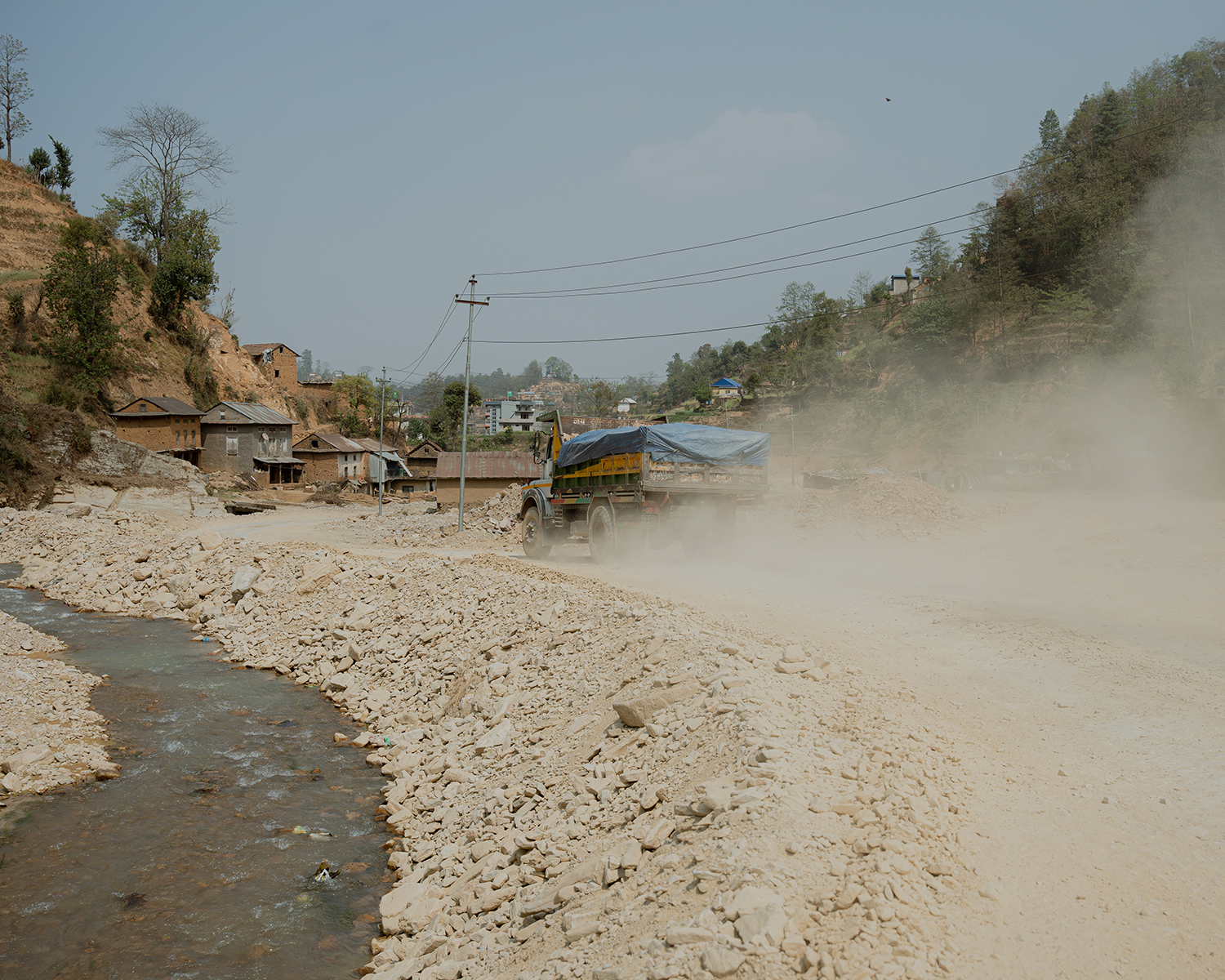Before the next monsoon
Inhabitants of Rosi Khola dread the coming rains after last year's devastating floodsThere are still two months to go before the monsoon breaks, but Roma Gurung who survived last September’s flash flood in Panauti is worried about what the rainy season has in store.
The massive debris flow of 28-29 September was unleashed by record-breaking rainfall, but it was made worse by stone quarries and sand mining as well as encroachment along the floodplains.
“The rains will arrive soon, and we don’t know where we should go,” says Gurung, who was nearly swept away last year. “Last time I ran up the hill with my husband and two children and watched our house being swept away by a flood. I do not know if I have the strength and courage to go through that again.”


For residents of Ward 12 in Panauti, the flood seven months ago is still etched in their memories. The unprecedented precipitation killed 224 people across the country, 32 of them just in Panauti. Five people were killed in Gurung’s neighbourhood where 187 houses were destroyed.
The floods also destroyed hydropower plants, slashing Nepal’s generation capacity by half, and damaged parts of national highways. About 25km of the BP Highway was washed away, and the temporary road is along the riverbed. This monsoon, the highway will have to be closed.
“If I were alone, I would have stayed home and let the flood and landslide take me away,” says another Ward 12 resident, Jamuna Biswakarma. “I ran for the sake of my family and my 10-day-old granddaughter.”

Locals here did not just lose loved ones or their homes: many also lost their livelihoods. On a recent visit, Sangita Pariyar was pleading with the ward chair for a sewing machine.
“A machine would help me earn a living. I could repay my loan and pay for the school admission of my children,” she said.
Pariyar and her husband had been running a tailoring shop in Ward 12. They had a decent income and were planning to expand their business. But the flood washed away everything: the shop, sewing machines, cash saved for Dasain, new clothes for sale, and some crucial documents.

Much of the death and damage was due to the unchecked operation of stone quarries and crusher companies in the catchment of Rosi, and much less with heavy monsoon rains.
There are 25 crusher and mining companiesin the Rosi catchment—many of them illegal—extracting sand, stones and gravel to feed the capital’s construction boom. This makes the slopes and river bed very unstable and greatly increases the risk of landslides and floods.
A government report has recommended shutting down some of the mining and crusher operations in the area. Some were running without registration, and others were not adhering to guidelines. According to Standards on Extraction, Sale and Management of Stones, Pebbles, and Sand (2020), such plants must be situated 2km away from any settlements. But that was not followed near the Rosi, and mining operations have resumed.



Residents along the riverbanks had long feared that these industries would trigger disasters. “The operators of these mines and crushers are powerful and influential people. We had protested to stop them, but who listens to ordinary people like us?” asks Biswakarma.
Some locals are now building shelters while others have sold their land and have moved elsewhere, fearing more disaster as pre-monsoon storms lash the mountains.
“My neighbours have started building temporary houses, but I don’t have the money,” says Gurung. “If the floods come, we could climb the slopes for safety, but now there is the danger of landslides too. How are we supposed to get through this monsoon?”


Ward chair Jaya Ram KC says that there are preparations to reduce the risk of floods and landslides this monsoon season. Flood control measures are also planned along the Rosi to protect Ward 12.
But locals are still haunted by the trauma of last September and do not feel prepared at all. They say they have received no support, not from the government, nor from the illegal stone quarries and crushers which are again operating with impunity.
Says Jamuna Biswakarma: “We are living with uncertainty and anxiety about the rains. Will anyone be held accountable for our suffering this time?”
In collaboration with Sajira Shrestha.




